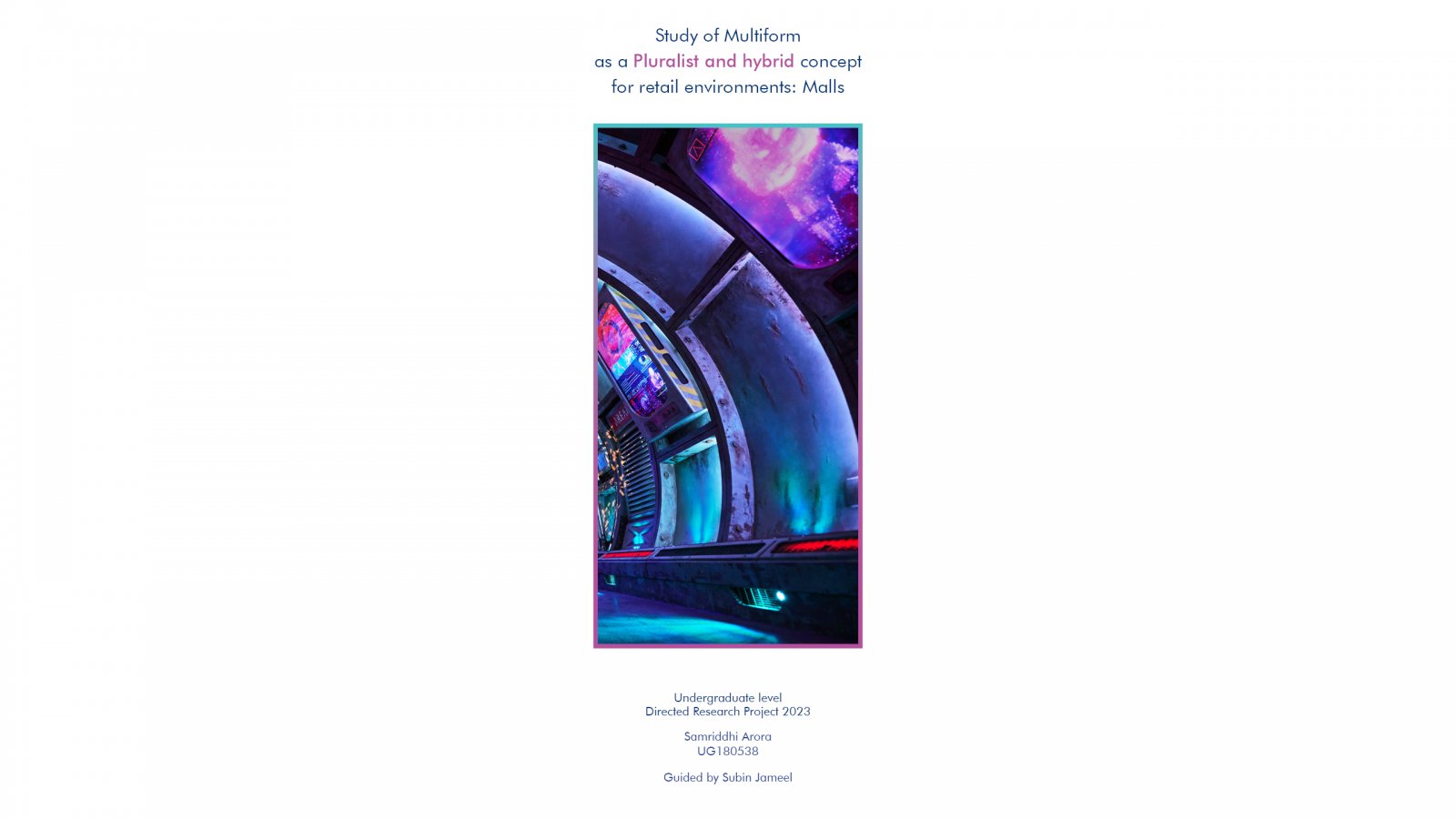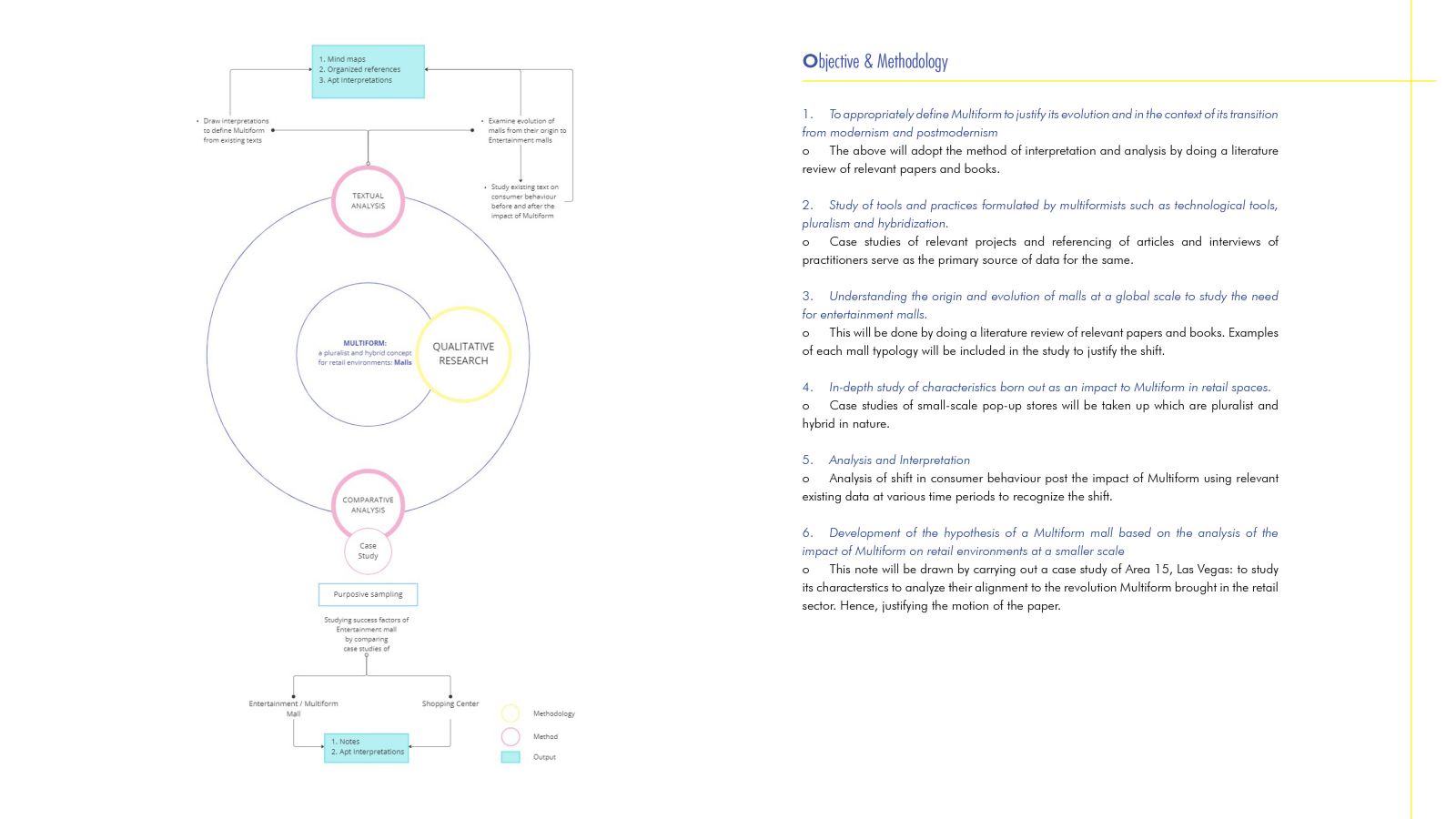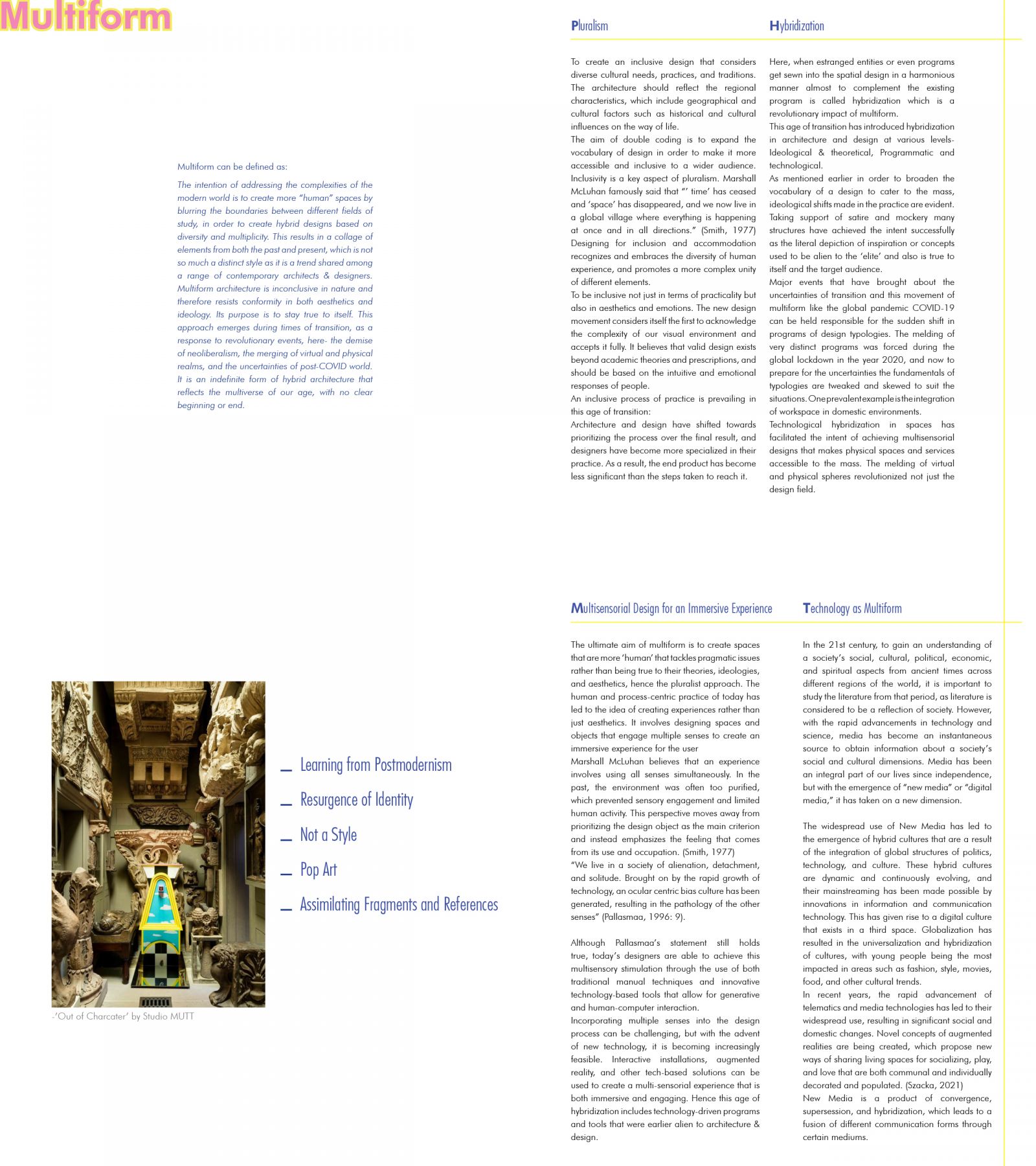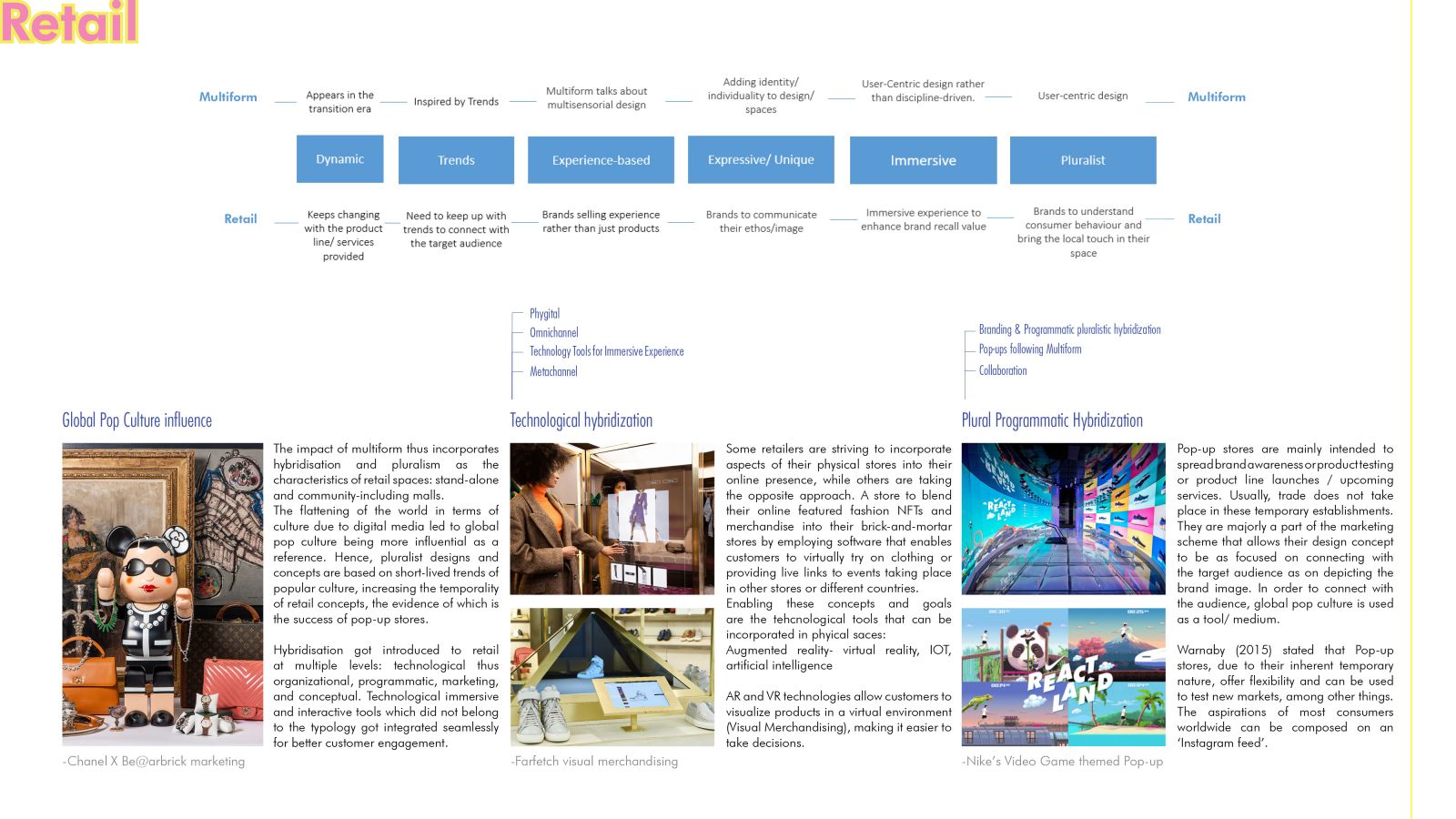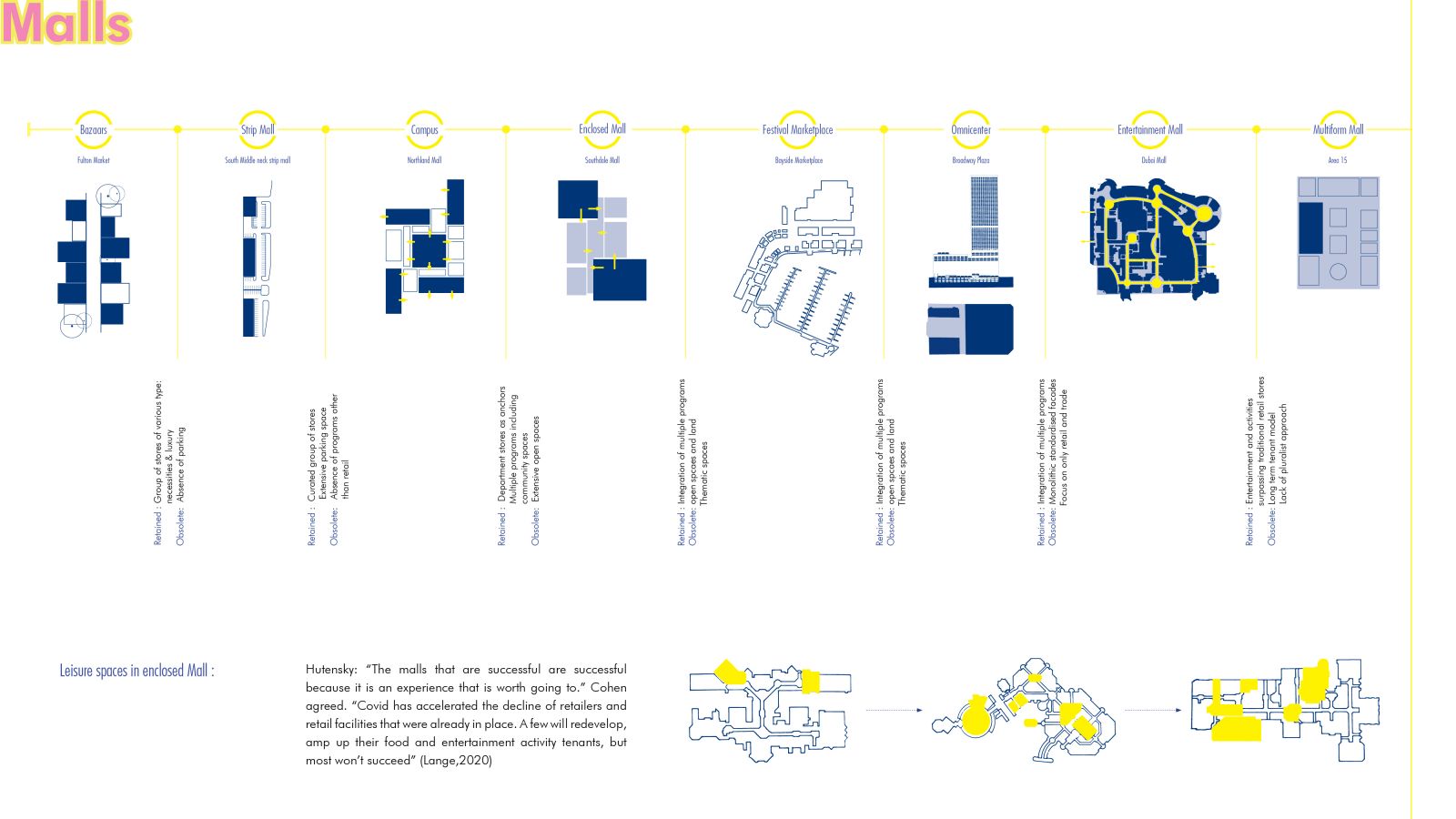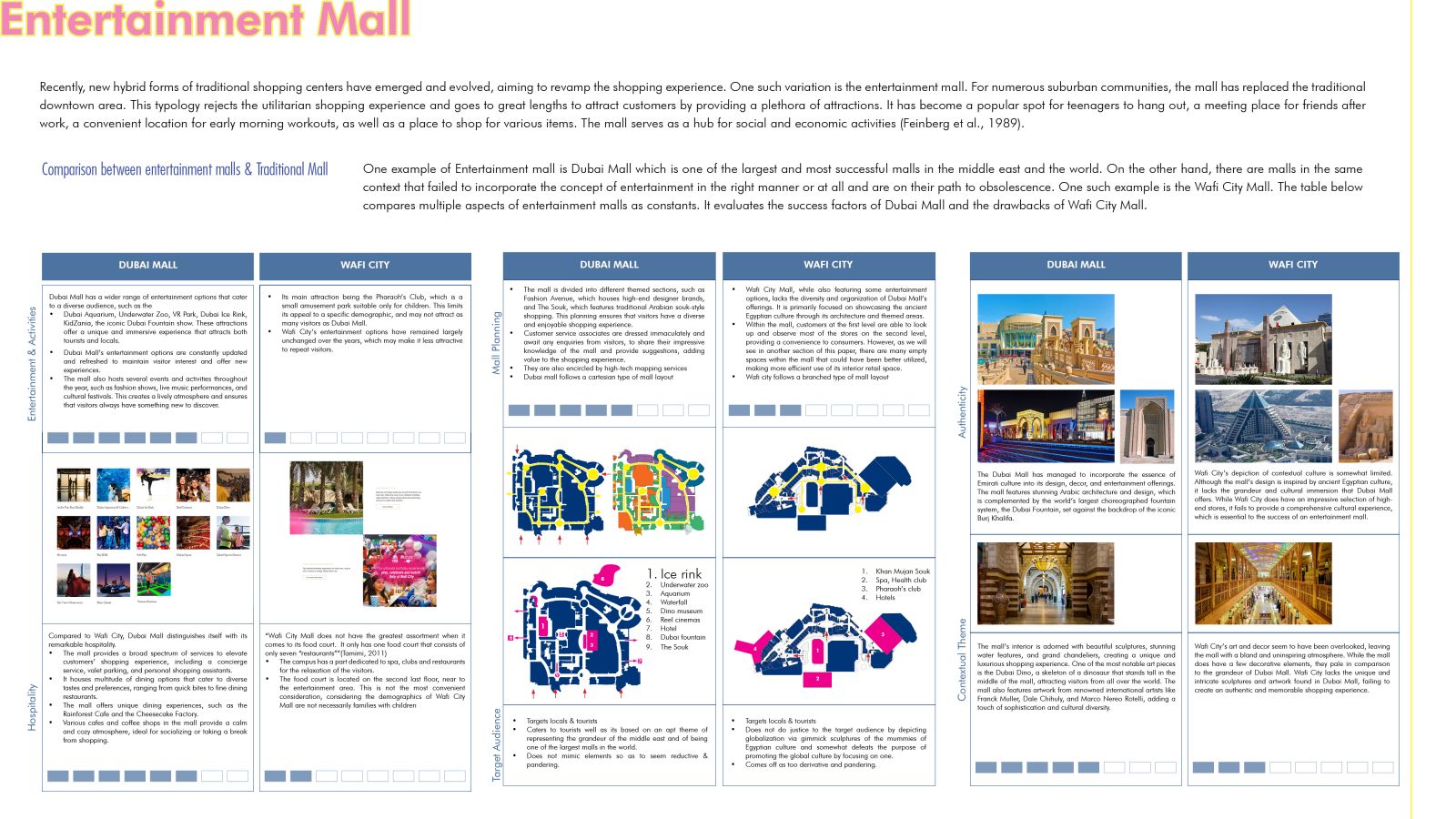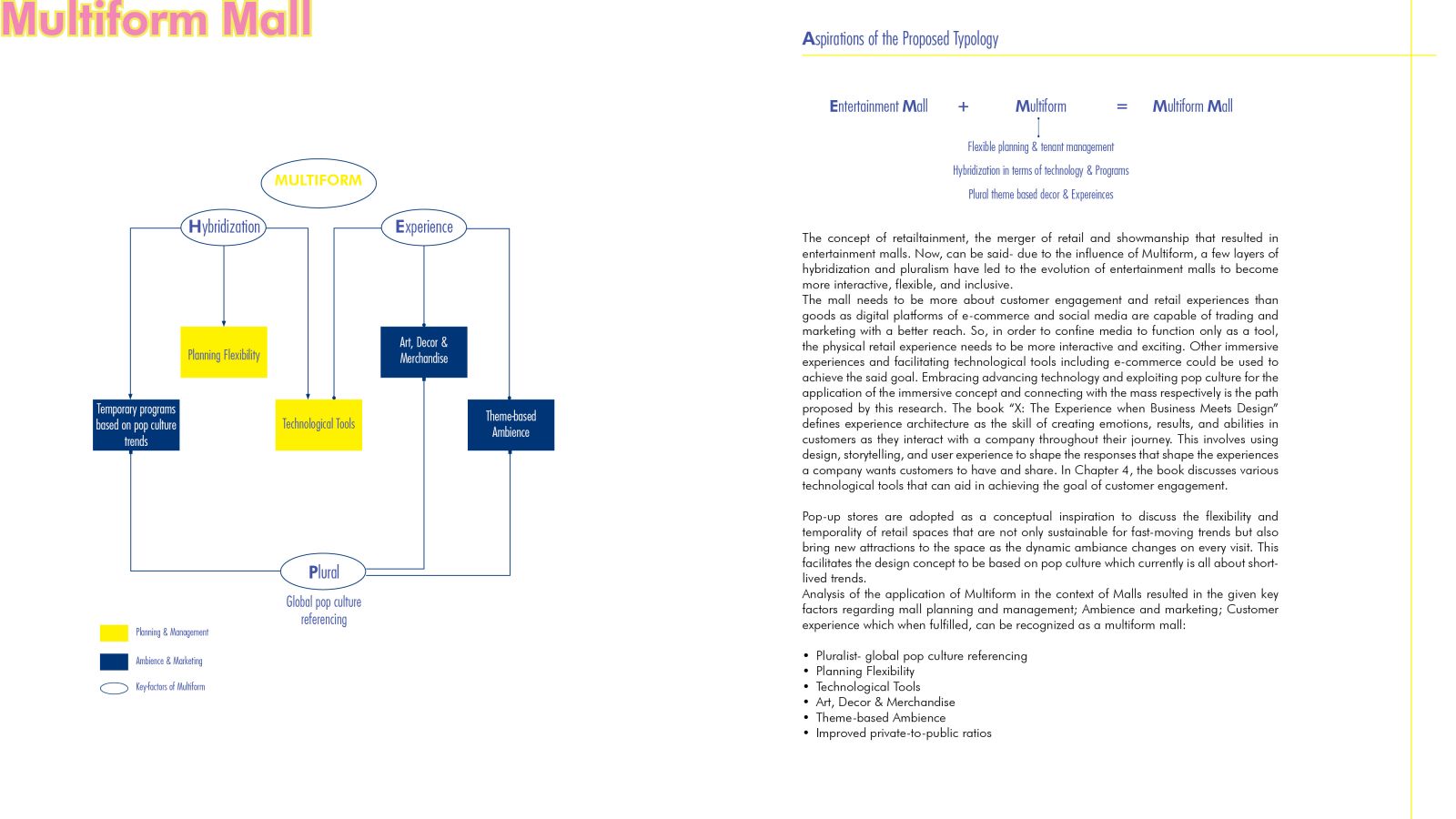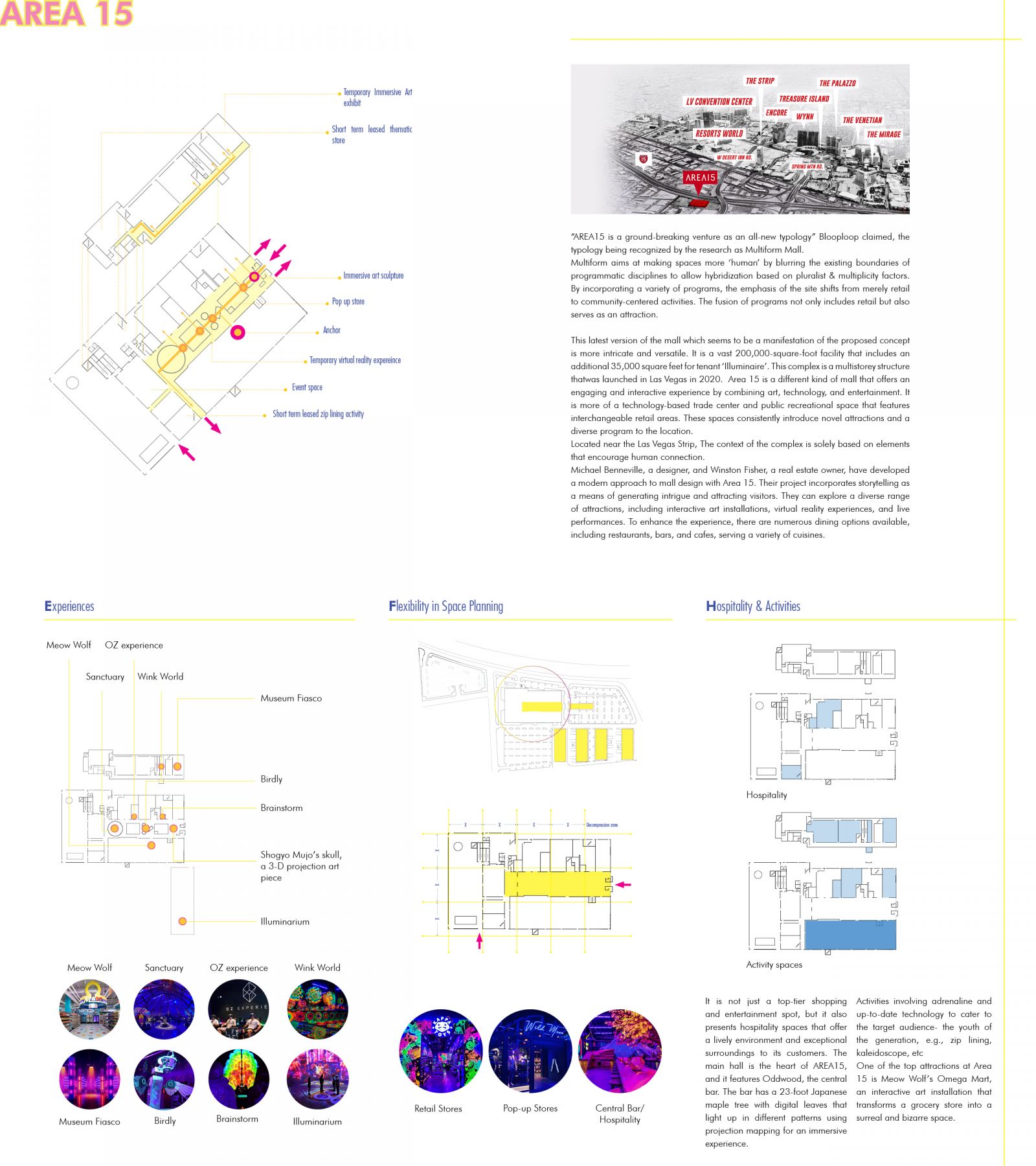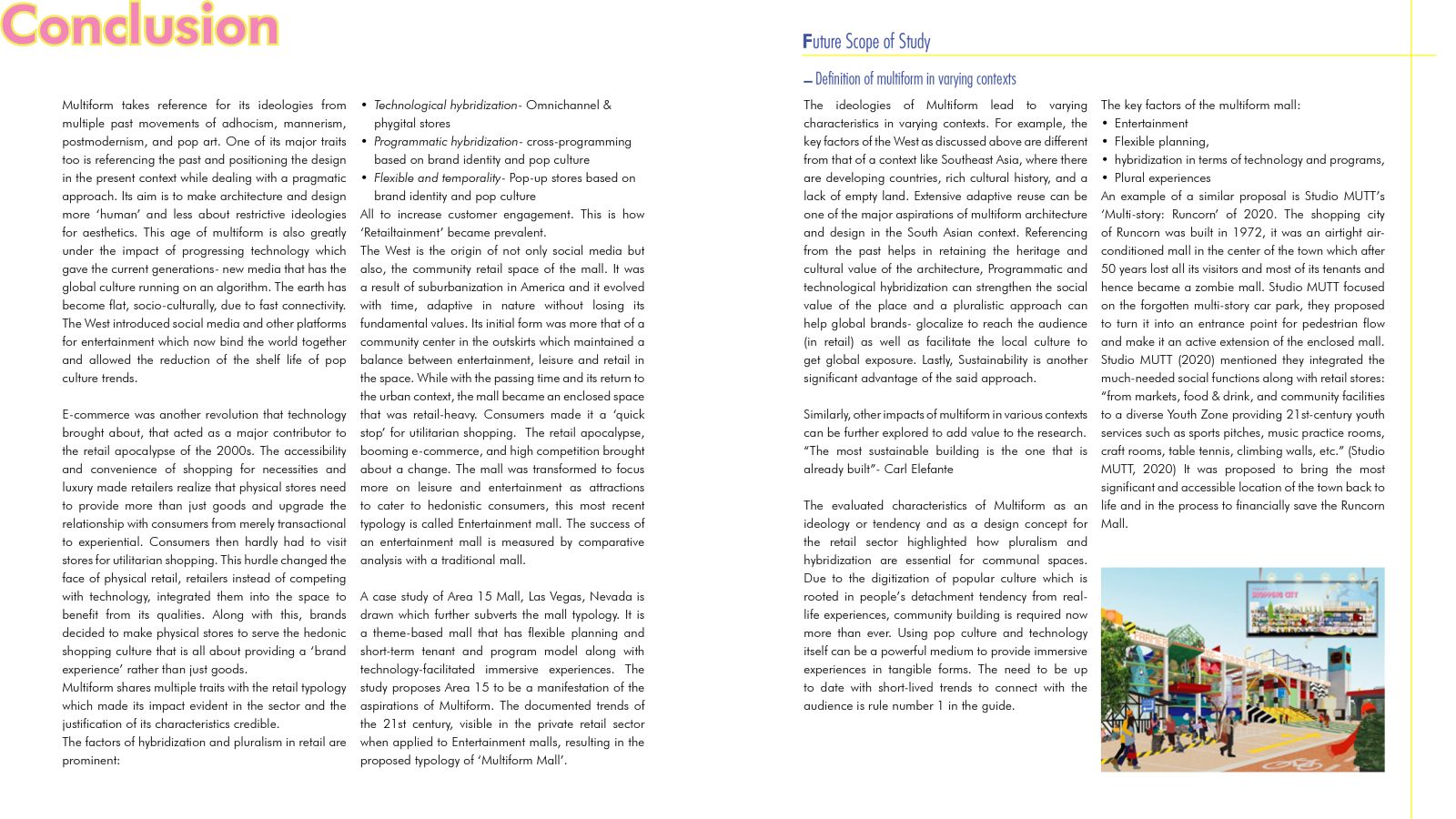Your browser is out-of-date!
For a richer surfing experience on our website, please update your browser. Update my browser now!
For a richer surfing experience on our website, please update your browser. Update my browser now!
The demise of neoliberalism, the convergence of the physical and virtual realms, and The post-pandemic world’s uncertainty necessitated a paradigm shift as a response that was answered by this tendency of design that assimilates fragments of past movements, recognized by Owen Hopkins as Multiform. The cultural shift is evident in all aspects of individual and societal life. This study attempts to recognize the designer’s response to changes as a whole and specifically in the retail sector, with a focus on community spaces like shopping malls where the impact is the most significant. The trajectory of mall typologies is mapped to note how it is adaptive in nature while retaining its fundamental qualities. The most recent typology is ‘entertainment malls’ that cater to the hedonic shopping culture as a means to tackle the decline of malls. Simultaneously the research justifies the relevance of multiform in this age of transition. The document evaluates how cross-programming and technology masquerade as necessities sewn into designed spaces. Multiform architecture aims to appeal to a constantly evolving, diverse range of audiences by incorporating various cultural and contemporary topical trends and double-coding techniques. The document evaluates if there is a tendency to leverage immersive experiences for the occupants of the space, rather than merely serving functional needs. This age of technology reliance introduced new media that has been exerting its influence on culture (now, algorithm based) and in turn, transforming society. Cultural imperialism can be held responsible for it. Omnichannel retail and temporary pop-up stores are the results of the new media and the dynamic pop culture it manifested. These documented trends of retail when applied to a large communal scale of malls act as the hypothesis for “Multiform Mall”. A comparative study is drawn between entertainment malls and the traditional mall typology to pick out its success factors. These factors when superimposed with the layers of Multiform’s aspirations subvert the mall typology to recognize the new typology of Multiform Mall. A case study of Area 15 Mall, Las Vegas is carried out to justify the hypothesis for a Multiform Mall.
View Additional Work